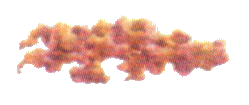Overview
Constipation is a common condition in which bowel movements are unusually infrequent, hard, or dry.
There is considerable variation in bowel habits that are considered "normal" in North American society, but physiologists believe that ideally a person should have a bowel movement within an hour after each meal, as the enteric nervous system that controls movement of the bowels produces a strong wave of peristalsis in response to the incoming bolus of food.
Please see conventional, complimentary and alternative medical treatments for important background information regarding the different types of medical treatments discussed on this page. Naturopathic, Complimentary and Alternative treatments that may be considered include:


